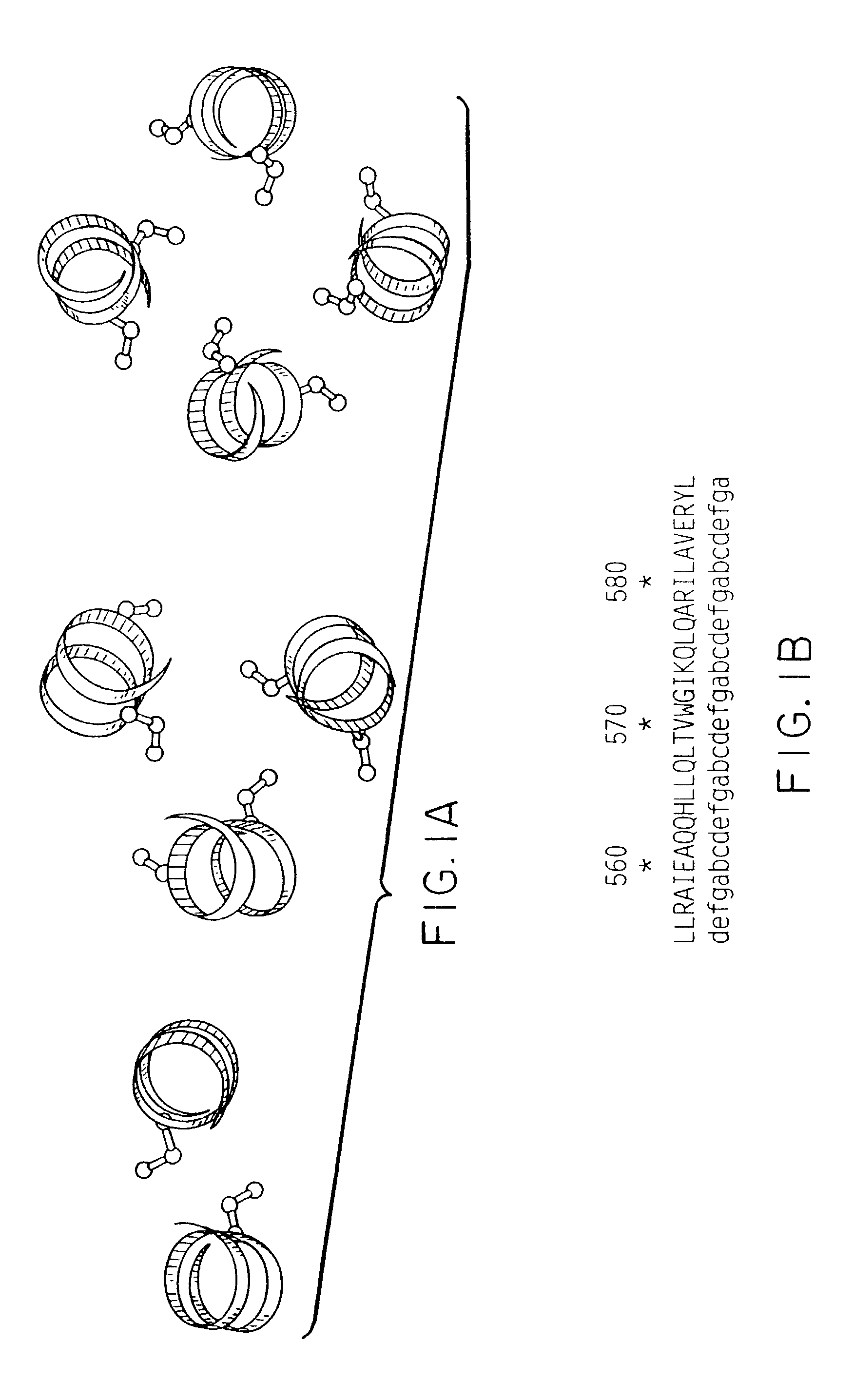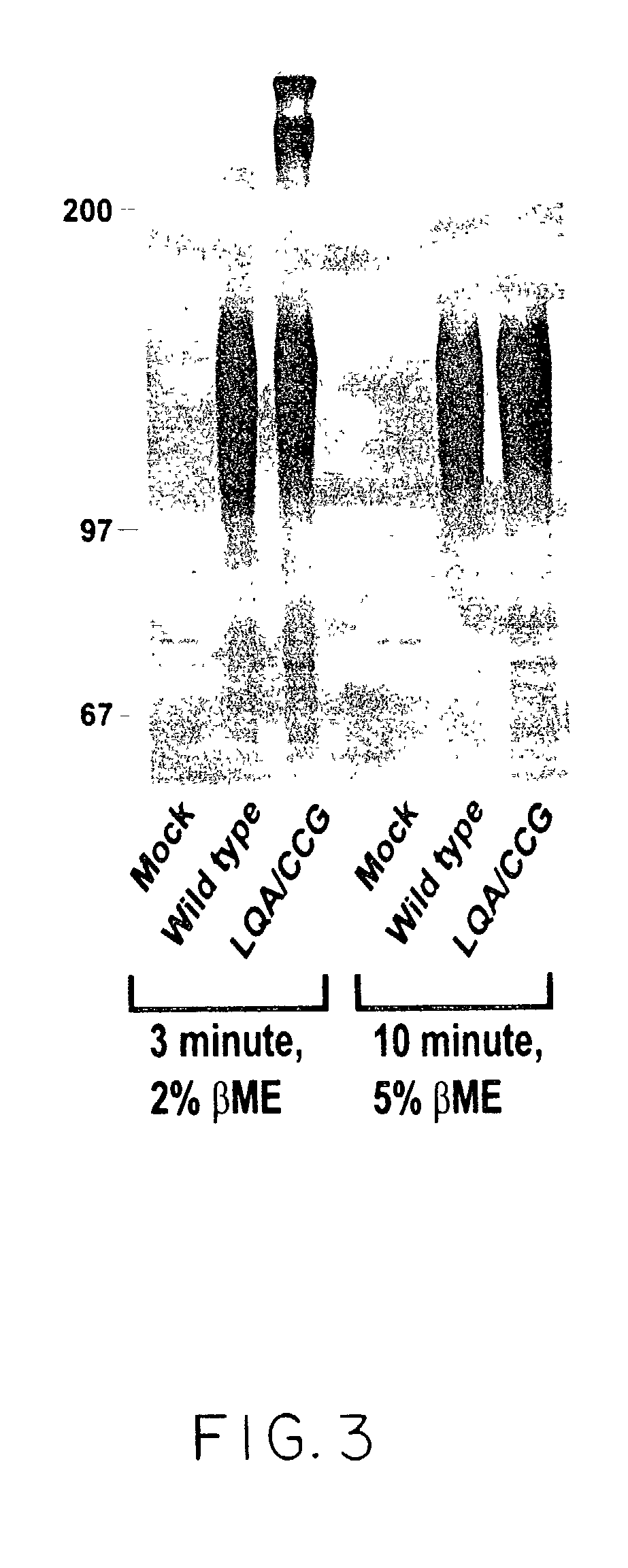Stabilization of envelope glycoprotein trimers by disulfide bonds introduced into a gp41 glycoprotein ectodomain
a glycoprotein and disulfide bond technology, applied in the direction of antibody medical ingredients, peptide/protein ingredients, peptide sources, etc., can solve the problems of inability of hiv-1 to replicate in primary monocyte/macrophage cultures, failure to target env, and failure to develop a subunit vaccine using env
- Summary
- Abstract
- Description
- Claims
- Application Information
AI Technical Summary
Benefits of technology
Problems solved by technology
Method used
Image
Examples
Embodiment Construction
"d_n">[0020]We have now discovered an improved immunogenic gp120-gp 41oligomer, sometimes referred to as gp 160 and DNA sequences encoding them. This oligomer is stabilized by the creation of cysteine-SH-cysteine bonds. Moreover, by appropriate placement of the cysteine residue in the gp 41 portion, the resulting oligomer forms spikes similar to that seen in the native wild type virus. Consequently, antibodies generated by these polypeptides are more likely to recognize and interact with native virus.
[0021]The gp160 glycoprotein is the precursor for gp120 and gp 41. Following oligomerization of the precursor the gp 160 glycoprotein is transported to the Golgi apparatus where cleavage by a cellular protease generates the gp120 and gp41 glycoproteins, which remain associated through non-covalent interactions (Earl, P. L., et al., J Virol 1991, Kowalsid, M., et al., Science 1987). In mammalian host cells, addition of complex sugars to selected, preferably surface-exposed, carbohydrate ...
PUM
 Login to View More
Login to View More Abstract
Description
Claims
Application Information
 Login to View More
Login to View More - R&D
- Intellectual Property
- Life Sciences
- Materials
- Tech Scout
- Unparalleled Data Quality
- Higher Quality Content
- 60% Fewer Hallucinations
Browse by: Latest US Patents, China's latest patents, Technical Efficacy Thesaurus, Application Domain, Technology Topic, Popular Technical Reports.
© 2025 PatSnap. All rights reserved.Legal|Privacy policy|Modern Slavery Act Transparency Statement|Sitemap|About US| Contact US: help@patsnap.com



